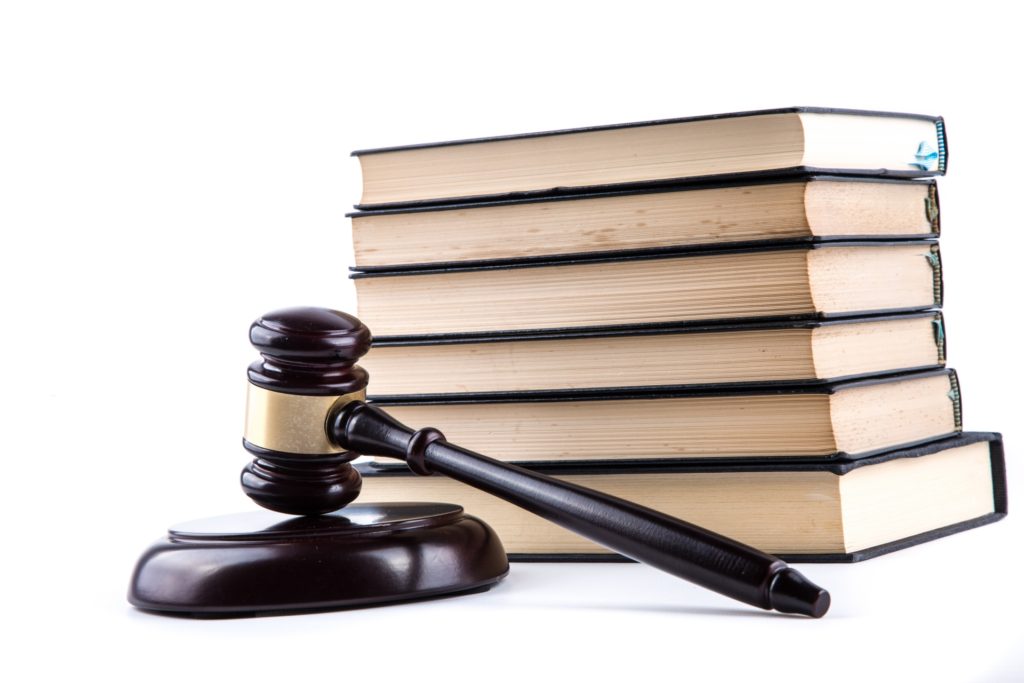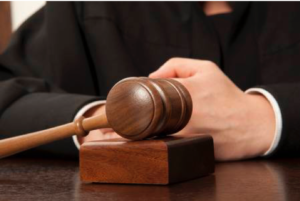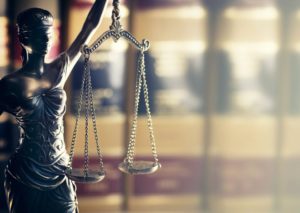Burdens of Production As Unproductive
R. George Wright*
Introduction
The placement of a legal burden of proof can be decisive as to the outcome of a case. Considerations of cost, fairness, and pragmatism normally play a role in allocating burdens of proof. Often, burdens of proof—particularly burdens of producing evidence on specific issues—are shifted between the parties as a case develops. All of this is uncontroversial.
While the burden of producing evidence on any given issue can be shifted, it can never be shared, at any given time, between the parties. As it turns out, however, there is actually no reason in logic or policy why a burden of production at a given point cannot be shared, as distinct from being borne exclusively by one party or the other. Of course, a shared burden of production on a specific issue at a specific time cannot possibly mean that if neither party produces legally sufficient evidence on that issue, then both parties somehow lose on that issue. In such a case, the burden sharing process has simply failed, and the legal consequences should be borne by the party that would ordinarily have borne the entire burden of production on that particular issue.
Certainly, a shared burden of production is in many contexts unfair or otherwise inappropriate. But in other contexts, as highlighted herein, a simultaneously shared production burden may not only be fair and technically efficient but may also promote better outcomes than would otherwise be available. This can be true especially whenever the government party’s interests are already mixed and are not entirely opposed to the interests of the nongovernmental party. Among other considerations, a shared burden of production at a given point may incentivize a meaningfully collaborative exploration of the issue. The parties, from their complementary positions of partial knowledge and ignorance, may then arrive at low-cost policy options and judicial resolutions that might not flow from adversarial discovery as it is normally conducted.
While evidentiary production burdens should not always be shared between the parties, there are important contexts in which the overall gains from production burden sharing can be quite substantial. Among such contexts are what we might call the religious freedom cases, focusing on statutory religious freedoms and their possible collisions with compelling governmental interests. Additionally, evidentiary production burdens can be usefully shared, and not merely shifted, between the parties in many Establishment Clause cases. But the possibility of evidentiary production burden sharing should be considered whenever, as in many equal protection, due process, and free speech constitutional right contexts, the relation between the governmental party and the private party is not entirely adversarial.
In such cases, a shared burden of evidentiary production may, for reasons explored below, result in better evidentiary outcomes and better ongoing relations between the parties, than would otherwise have been attainable. In all shared burden cases, the efforts of both parties should be taken into account by the presiding judge. Those efforts should, in turn, be appropriately incentivized in advance and rewarded after the fact in the coin of enhanced credibility. Cooperating parties should be rewarded with appropriate enhancements of their credibility not merely on the particular issue at stake, but, importantly, more generally as well. Immediately below, this Article considers the logic of fixed, shifting, and shared burdens of evidentiary production in general.
I. Burdens of Production: Placed, Shifted, and . . . Shared
Typically, legal cases involve disputes over whether some act or event took place and whether some legal standard of performance was thereby met. One might say that formulating this issue itself precedes any placement of any burden of proof. Perhaps statements of the legal issues and placements of burdens may actually be interdependent as well. In any event, however, the general idea of a burden of proof has long been plagued by “distressing ambiguity.” At a minimum, the law has, rightly or wrongly, distinguished between a burden of production, or a bringing forth of some amount of evidence, and some ultimate burden of persuasion.
A bit more elaborately, one might ask four questions about adjudicative burdens in general. Specifically, one might ask “who bears the burden”; “what or how heavy the burden is”; “what is the effect of failing to carry the burden”; and “what is the effect of succeeding in carrying it?” The question of which party bears, or should bear, some sort of burden of producing evidence in any given context is, unhappily, notoriously vexed.
Thus, it might seem obvious that the burden of producing evidence should rest on the party with easier, or lower-cost, access to the evidence in question. It is generally easier for a plaintiff to prove the existence of a medical bill than for the defendant to prove that the plaintiff never received a medical bill.
Imagine, though, the legal equivalent of a hypothetical raised by Professor James Cargile. Suppose I call Smith on the phone, and that Smith answers by declaring to me that he is indeed Smith. My intention in calling is merely to invite Smith to go bowling. Arbitrarily, though, I now demand that Smith produce at least some evidence that he is in fact whom he affirmatively claims to be. Smith, after all, need not have asserted that he is in fact Smith. And quite likely, Smith has, in the moment, easier and lower-cost ways of supporting his affirmative claim to be Smith than I have supporting any claim that he is not.
Yet in such a case, we do not normally think it incumbent upon Smith to produce any evidence that he is whom he claims to be. Doubtless there are exceptions, or at least some variant cases. Perhaps I am the commanding officer of Smith and everyone else who might have answered the phone. Perhaps I am returning Smith’s phone call, in which he had asked for his credit balance or for a personal loan. Such circumstances might seem to call for shifting the burden of production as to identity.
Thus, “[t]here are no hard-and-fast standards governing the allocation of the burden of proof in every situation.” Instead, the courts are to look, quite vaguely, to “policy and fairness based on experience in the different situations.” The law is, in this respect, open to considerations of ethics and pragmatism in allocating the burden of evidentiary production.
The courts also allow for, if they do not actually mandate, shifts in the placement of production burdens as the adjudicative process unfolds. The possibility of such shifts “means that the balance of considerations relevant to allocations [of the burden of production] . . . may be struck several times during the course of a trial.” Thus, “the burden of going forward with evidence shifts from side to side . . . .” Various forms of the shifting imposition of burdens of production are familiar in First Amendment cases, Title VII civil rights cases, and religious discrimination cases.
The idea of shifts, as between the parties, of the burden of production of evidence is thus well-established in the law. But such shifts leave untouched the unquestioned legal assumption that at any given time, as to any particular element or defense, one party, to the exclusion of the opposing party, has the sole and exclusive burden of evidentiary production.
Therefore, it is accurately reported that
each issue to be litigated, whether it is an element or an affirmative defense, has a burden or production associated with it that requires one party or the other to produce evidence relevant to the particular (hence the name ‘burden of production’).
Under the current law, burdens of evidentiary production can thus be shifted, but generally cannot be simultaneously shared, bilateral, joint, or mutual, in any meaningful respect.
This legal practice is, however, not required by logic, fairness, adversarialism, or pragmatism. The unshared evidentiary burden, at any point, is instead often both unnecessary and generally ill-advised. Courts should, crucially, be permitted by rule to impose, at appropriate points in the adjudicative process, a shared or joint burden of production on the opposing parties. Burdens thus need not be exclusive or binary.
To be clear, the value of imposing a simultaneously shared, and not merely a shifting, burden of production would vary substantially, depending on the nature of the case. The case law referred to below is skewed to illustrate the various contexts in which a jointly shared burden of production tends to have the greatest value. Typically, such cases will involve individual constitutional rights and a less-than-complete opposition of the parties’ interests at stake.
A shared burden of evidentiary production, at an appropriate point in a lawsuit, may generate several sorts of benefits. Most generally, a shared burden of production incentivizes efforts by both parties to creatively, and mutually responsively, enhance the overall credibility of their respective positions. A shared burden in this respect means that a judge can give a variable degree of credit to either side for meaningful effort in developing and clarifying the evidence, above and beyond that which can be attained by formal adversarial discovery processes. The judge’s finding on the issue can properly reflect the judge’s sense of the degree to which each party has constructively and collaboratively contributed to the overall state of the evidence. And enhanced credibility on one element of a case may naturally and perhaps inevitably translate to greater credibility of that party on other elements of the case, including on damages and other remedies.
Thus, the judge will take into account the degree to which both parties have, from their different positions, constructively collaborated and engaged with the opposing party in seeking an optimal resolution of the issue. That is, the judge can reward, and thereby incentivize in advance, the parties’ active cooperation in devising some previously unthought-of set of rules, practices, and behaviors that can accommodate and more fully promote the legitimate interests of the public and of both parties.
More concretely, there are important kinds of constitutional and other cases in which neither party has easier access to all aspects of the crucial facts, or to the crucial evidence. In those cases, one party has better access to some aspects of the crucial evidence, but the opposing party has better access to other aspects of that issue. The optimal resolution may require not just formal discovery and formal negotiations, but a process of creative mutual engagement, initiative, and collaborative exploration by the parties.
In such cases, both parties thus have certain advantages and disadvantages with respect to key issues. The best practical resolution may be one that neither party can envision even after discovery and might not arrive at but for the cooperation incentivized by a shared burden of proof on the issue. As well, neither party’s initial claims are typically so out of the range of what is normally expected, or so outlandish, as to virtually call for an unshared burden of proof. The law is already open to the possibility of shared burdens in such cases, in the sense that that allocations of burdens of proof are typically thought of as involving questions of law, or of mixed questions of law and fact subject to de novo review. Thus, no powers need be snatched by the court from the trier of fact.
In addition, a shared burden of proof can more broadly incentivize treating an opposing party as a respect-worthy potential source of creative insight. The parties may have very different relevant knowledge bases to begin with. But a shared burden of proof incentivizes thinking of an opposing party as, in some respects, an epistemic peer. And this process can lead to better relations as well as better decisional outcomes.
Part of the logic here is that otherwise inefficiently adversarial interactions can be modified. In particular,
the quality of the discussion can be enhanced if the participants behave in a more cooperative way by offering advice to the other party in the form of providing questions or counterarguments that enable the proponent to see the weakness in his argument and improve it as the discussion proceeds.
But much of the value of such a collaborative investigation is not in enlightening one’s opponent, but in discovering workable options not initially envisioned by either party. Below, this Article illustrates these contentions in particularly important religious freedom and Establishment Clause Contexts.
II. The Value of Burden Sharing In Practice
A. The Religious Freedom Context
Across a broad range of religious freedom cases, evidentiary production burdens are placed on the government that is alleged to have impaired the religious practice in question. Typically, the burden is placed on the government not merely to explain its reasoning in substantially burdening the claimant’s religious practice, but to prove that its policy “is the least restrictive means of furthering a compelling governmental interest.”
There is thus a current consensus that the government, rather than the religious claimant, bears exclusively the burden of producing evidence with respect to the narrow tailoring of the religious burden in question. Remarkably, though, the courts vary dramatically with respect to what discharging this burden requires in practice. What the courts do not envision, however, is any sense of a simultaneously shared or jointly held burden with respect to showing the presence or absence of narrow tailoring.
A number of courts allow the government to discharge the burden of showing narrow tailoring on the basis of only rather modest efforts. For example, the Eleventh Circuit has concluded that in this context, the government defendant need consider only the religious claimant’s own proposed alternatives, if any, and their compatibility with the government’s demonstrable compelling interests. Requiring the government to refute every conceivable way in which the religious claimant might be accommodated consistent with the government’s compelling interests would ask the impossible.
Rather than requiring the government to perform the impossible, some courts limit the universe of possible alternative regulations to merely those that the religious claimant is in a position to propose. Thus, it is said that while the relevant statutory burden remains on the government, once the government presents its evidence, the religious claimant “must demonstrate what, if any, less restrictive means remain unexplored.”
What these analyses miss, though, is the range of alternatives between requiring the government to refute innumerable options and requiring the government to refute merely those alternatives, if any, that the religious claimant is currently positioned to recognize and articulate. There may be some limited room for the courts themselves, at trial or on appeal, to try to devise less religiously burdensome alternative policies that still satisfactorily promote the compelling government interests at stake. But there is certainly no guarantee that court-initiated suggestions will be workable in practice, will adequately promote the compelling interests of the government, and will also leave the claimant substantially less religiously burdened.
As well, it seems sensible for a court to ask on its own initiative whether one or more at least apparently comparable governmental institutions manage to promote their compelling interests without substantially burdening religious exercise. But this kind of inquiry merely steers the narrow tailoring inquiry, without reallocating any burden of evidentiary production. The government alone still bears the burden of showing the noncomparability of other, less religiously restrictive institutions. And in this, the government may sometimes be assisted by a rule that the major religious protection statutes do “not pit institutions against one another in a race to the top of the risk tolerance or cost-absorption ladder.”
The problem is that unshared burdens of production, wherever they are placed, do not exploit the possibility that cooperative investigation, incentivized by a shared burden of production, may inspire the recognition of otherwise unavailable improved alternative policies. Typically, the managers of the government institution in question will hold a treasury of tacit understandings, perhaps not commonly articulated, or even brought to conscious awareness, concerning that institution. And they may certainly have blind spots. Religious claimants, on the other hand, may be motivated to see new possibilities, but they may lack knowledge of the workings of the government institution. And religious claimants also may not fully grasp the practical implications of their own religious beliefs and of how they might be accommodated.
In short, both parties may benefit from, and usefully contribute to, a genuinely collaborative investigation into the narrow tailoring of the institutional policy in question. Judicial practice, however, currently falls short of rewarding such collaborative behavior in any systematic way.
Some courts, certainly, have spun the government’s narrow tailoring burden in interesting ways. For example, the government may be demandingly required to “demonstrate” narrow tailoring. Or the government may be bound to consider alternative policies of which it becomes aware during the litigation, whether proposed by the religious claimant or not. The government may be demandingly required to show “that it has actually considered and rejected . . . less restrictive measure before adopting the challenged practice.” Or the government may be required to take the initiative of actively seeking out alternative policies in advance.
None of this tinkering, however, capitalizes on the possibilities of incentivized collaborative investigation. Consider a case in which an incarcerated religious claimant seeks a religious accommodation. Presumably, the claimant knows something of the prison as an institution, but far less, even after formal discovery, than do prison officials. So, the claimant’s own proposed accommodation may well be infeasible, or less than optimal, even from that claimant’s own standpoint. But, importantly, the religious claimant may also be on to something, however vaguely. Perhaps some substantially modified version of the claimant’s proposal could meaningfully reduce the experienced religious burdening while having no significant impact on the prison’s compelling interests. After all, government institutions in general have, among their various important interests, the interest in not unnecessarily restricting religious practices.
More generally, collaborative inquiry may teach each party more about the other. And in the best cases, each party may learn more about its own priorities and possibilities. Religious claimants, for example, may not have exhaustively catalogued all of their own theological options and commitments. Their thinking may evolve. And at the very least, the dialogues that are incentivized by a shared burden of production may result in a greater degree of trust, or respect, between the parties.
Consider the circumstances in, for example, the case of Washington v. Klem. At issue was a Pennsylvania Department of Corrections rule permitting only ten books—largely regardless of size—in a prison cell at any given time. More specifically, inmates were allowed a maximum of ten books, ten magazines, and three newspapers. Interestingly, inmates were not permitted to substitute, say, more books, of whatever size, for fewer magazines or newspapers.
The religious claimant Henry Washington had been a long-term adherent of a Pan-Afrikan religion that required practitioners “to read four different Afro-centric books per day.” Apparently, these four books per day had to be unread books. Books stored in or borrowed from a prison library, or from outside sources, could presumably count toward this daily reading requirement.
Now, it is certainly possible to explore narrow tailoring issues through ordinary discovery mechanisms, with the relevant production burden entirely on the government. But it seems questionable that typical defensive posturing in discovery will be no less productive than a collaborative mutual exploration of alternatives available to either or both parties. And on this logic, mere judicial speculation cannot fully substitute for such a collaborative process.
The Washington case seems to suggest that the prison was concerned with issues of safety, sanitation, health, and security. Perhaps the real constraint was not a matter of, say, books versus magazines, but the personal property limit, per cell, of “four storage boxes or their equivalent.” An informal, equality-based, constructive exploration of the possibilities might have led to a quick, less judicially expensive recognition that the ten book maximum could be modified or abolished as a free-standing rule.
And we should not overlook the possibility that the religious claimant’s own requirements may not be set in stone, in all of their particular implications. Not every religious claimant is an exhaustive theologian. Could three large books per day be judged equivalent to four short books, precisely from the claimant’s own perspective? Perhaps not, for doctrinal reasons. But perhaps the claimant may simply not have considered such possibilities, or their religious implications. Could it ever be more desirable to reread an especially valuable book than to devote the same time to a new, unread, but perhaps less valuable book? Again, perhaps not. But perhaps worthy of reflection. Could an Afro-centric single topic magazine or other media count as a book? Are there degrees of justifications for, or legitimate excuses for, falling short on one’s daily reading, or not?
Thus, the religious claimant, or some similarly situated person, could be open to further reflection on these and other questions. The point, though, is that further reflection by the religious claimant is less likely in the course of standard discovery, with the key burdens on the opposing party, than in a less formal, mutually responsive, mutually respectful, and mutually responsible exploratory dialogue. A standard formal discovery process by comparison tends to suppress such positive outcomes, as well as overall morale.
Consider, finally, the intriguing recent case of United States v. Grady. Grady involved an act of civil disobedience by members of a Christian pacifist and antinuclear weapons group. This religiously motivated act was thought of as one of “symbolic disarmament.” The defendants broke into the large Kings Bay Naval Base in darkness, and then engaged in a number of prohibited activities. These included spray painting monuments, pouring donated human blood on base property, and cutting through fencing to enter a relatively secure area.
The motivation underlying this civil disobedience was found to be a religious imperative to “practice peaceful activism and prevent nuclear war.” Criminal prosecution for the acts in question presumably amounted to a substantial after-the-fact burden on the defendants’ religious practices. This left the question of whether the criminal prosecution was the least restrictive means of promoting the presumably compelling government interest at stake.
To begin with, the parties’ apparent agreement on the existence of a relevant compelling government interest in this case is a bit curious. The defendants’ acts amounted to, at worst, vandalism in the context of a naval base “covering approximately 17,000 acres with 26 miles of perimeter fencing and employing approximately 10,500 people as part of the staff or crew.” Presumably, the base would on any given day have any number of higher and broader priorities than attending to the specific physical consequences of the defendants’ acts. This is especially so in religious exercise cases where the government interest at stake cannot be broadly construed. It is only the government interest in, and confined specifically to, the particular circumstances of the defendant’s own case that must be compelling. If the government’s interest in this particular case is deemed genuinely compelling, and of truly overriding importance, then the distinction between compelling government interests and merely ordinary, day-to-day interests is left unclear.
On the issue of narrow tailoring, or least restrictive means, the defendants in Grady took the initiative to propose several alternative, less religiously burdensome government responses to their acts. These proposals included “reducing the number and severity of the charges, . . . not prosecuting and offering instead civil injunctions, civil damages, community service, ‘ban and bar’ letters, or pretrial diversion; and . . . giving the defendants permission to practice symbolic disarmament in a designated area on the base.” It may also be relevant that the defendants apparently declined the opportunity to legally demonstrate at a facility outside of the gates of the naval base.
These proposed alternatives, to the extent they are post hoc, or are entirely after the fact, might or might not have deterred similar future acts, by the defendants or by others. But that is again irrelevant to the least restrictive means test. And any costs or harms of the defendants’ acts were obviously incurred before any later, responsive government decision as to whether, or how vigorously to criminally prosecute those acts.
From this Article’s perspective, it is at least minimally helpful that the defendants took it upon themselves, after the fact, to suggest alternatives, whether satisfactory or not, to the government’s criminal prosecution. Of course, requiring the government to have considered other demonstration possibilities before the government had any notice of the nature of the defendants’ illegal acts would be a bit awkward. And it is always possible, as Zeno’s Paradoxes imply, to imagine reducing any penalty, criminal or civil, in half, in half again, or in half yet again, whether with meaningful deterrent effect or not.
But what is crucially missing in Grady is not after-the-fact suggestions from the defendants, but any sense of a meaningful, collaborative, interactive exploratory discussion between the parties, before or after the civil disobedience and the initiation of the criminal prosecution. We know, from the defendants’ perspective, that their religious beliefs require “symbolic disarmament” and that it is thus incumbent upon the defendants to “practice peaceful activism and prevent nuclear war.” But we do not know how those rather generally formulated principles bear upon any possible religious duty to act more or less precisely than the defendants did, on that occasion or at other times and places, and not in some other licit or illicit manner. Could the gravity of the actual penalty affect the existence or the weight of a religious obligation to engage in more or less similar acts in the future?
Consider, then, a conversation in which naval base officials, or criminal case prosecutors, ask whether the defendants believe that their chosen act of civil disobedience was more likely to prevent nuclear war, or to amount to genuinely peaceful activism, than other legal demonstrations, of any sort, in any designated area. Or more generally, what is “symbolic disarmament” thought to include and exclude, or to require? Is symbolic disarmament thought to require the splashing of human blood, or might other activities be permissibly substituted? By analogy, if one’s religious beliefs require church attendance once a week, on any day of the week, it need not be a substantial burden on one’s religious practice if the government penalizes church attendance on Thursdays, as distinct from any other day.
This is not at all a matter of attempting to pressure, or even persuade, anyone to change their sincerely held religious beliefs. But not all sincere religious believers have fully thought through all their beliefs, let alone the detailed practical implications and permissions entailed by their beliefs. Nor is it certain that the eventual defendants would have fully appreciated all the relevant possibilities associated with a naval base of 17,000 acres, or other arguably relevant sites and facilities.
As the Grady case unfolded, the government wound up successfully claiming that they showed a genuinely compelling interest and that they used the least restrictive means to protect that interest. And the defendants were left with something of an explanatory gap between their articulated general religious beliefs and the specific acts they chose to perform. Ordinary discovery processes plainly failed to catalyze any constructive movement by either party in this context. But a shared burden of producing relevant evidence might have incentivized a meaningful dialogue in which one or both parties came to adjust their prior, perhaps partly undeveloped, assumptions.
B. The Establishment Clause Context
In the Establishment Clause cases, crucial burdens of production may be laid entirely upon the government entity engaging in the challenged practice. As Judge Richard Posner has noted in the Establishment Clause context, the government may well face lower costs than the challenging party in accessing some crucial sorts of evidence. But the comparison in such cases, on the criterion of efficiency, is apparently between placing the burden of production entirely on one party, as distinct from the other. That comparison tells us nothing about the possible efficiencies in shared burdens of production, or more concretely, about the possibility that a shared burden may result, at low cost, in evidence of a quality not otherwise available.
There are of course many kinds of contested Establishment Clause contexts. For purposes of this Article, though, among the most useful are the cases involving prayers, by officials or by outsiders, at the opening of some sort of official public meeting. Some such prayers may be thought of as proselytizing in their nature; as sectarian; as theistic; as merely generally religious; or even as somehow secular. Such prayers are thought to serve a number of purposes. Perhaps an official prayer “lends gravity to public business, reminds lawmakers to transcend petty differences in pursuit of a higher purpose, and expresses a common aspiration to a just and peaceful society.” It is also said that “a moment of prayer or quiet reflection sets the mind to a higher purpose and thereby eases the task of governing.” More controversially, it has been claimed that legislative prayer, and the invocation of divine guidance, may legitimately serve not only secular, but also religious purposes.
If we take official public body prayers to amount to any sort of statement at all, we can then say that “[]the meaning of a statement to its audience depends both on the intention of the speaker and on the ‘objective’ meaning of the statement in the community.” More particularly, some such prayers may “send a message to outsiders that they are not full members of the political community . . . .”
Based perhaps on stipulations or on adversarial discovery supervised by judges, the courts seek to resolve such concerns by asking “whether a reasonable observer, apprised of the circumstances and history of the disputed government practice, would conclude that it conveys a message of endorsement or disapproval of religious faith.”
The problem, however, is that the appropriateness, or inappropriateness, of deferring to someone’s largely subjective feelings and emotions may not be optimally resolved through adversarial discovery, or even through the assessment of a conscientious judge. As concurring Judge David Hamilton observes, the “reasonable, objective observer . . . tends to sound a lot like the judge authoring the opinion.” Judges may “deliberately try[] to see the situation from others’ point of view.” But as Judge Hamilton observes, the non-hypersensitive character of an emotional reaction may depend upon one’s status as a religious adherent or nonadherent, or on one’s dominant or subordinate group status.
This Article’s claim in this context is that genuinely interactive dialogue between the most directly affected parties may catalyze possible courses of government action that are not apparent even to the most conscientious judges. The best available answers may well not be the formal positions of either party in isolation, or of the most empathetic judge.
Consider, for example, the question of whether a prayer giver is engaging in proselytization, or in the perhaps unintended disparagement of the beliefs of others, above and beyond the admittedly sectarian character of the prayer. Or the question of whether a clear and conspicuous disclaimer of any unconstitutional intent would be genuinely productive. Or whether it might be less religiously objectionable if outsiders, rather than official board members, deliver the prayers in question. Each of these crucial questions is best answered not through, say, a thorough and probing cross-examination, or isolated reflection in chambers, but through genuinely interactive low-cost dialogue in which both parties bear some legal burden and may win deserved credit in the form of enhanced issue-specific and, importantly, more general, across-the-board credibility.
Perhaps the most pervasive issue in several Establishment Clause cases is that of the presence or absence of some form of government coercion. On any occasion in which the court chooses to focus on the idea of coercion in Establishment Clause cases, that court must responsibly attend to a number of subtle considerations. In particular, for cases of alleged coercion, the particularities of context and circumstance matter. Whether the alleged coercion was intended by the government may also matter, as well as what degree of resistance by the allegedly coerced party should have been legally required or expected. Not every verbal activity, even by officials, counts legally as coercive. We expect adults, if not also children, to display at least some minimal baseline level of resistance to verbal manipulations. But in any given case, in any given context, just what degree of such resistance, or fortitude, can fairly be asked?
In many cases of alleged religious coercion, the best we can do may be to require the parties to jointly explore the relevant backgrounds, assumptions, sentiments, purposes, priorities, and any modifications thereto that emerge as possible and appropriate as each learns from the other. There is certainly no guarantee that genuine progress toward better mutual understanding and a superior overall judicial case resolution will in fact ensue. But the familiar formal discovery processes tend to be relatively costly and not especially constructive in the respects explored above. Holding out the incentive of increased party credibility, on the specific issue and more generally, may lead to more constructive overall results.
III. Conclusion
The practice of placing a burden of evidentiary production on one adversarial party, to the exclusion of the other party, is so familiar that we fail to notice its frequent inappropriateness. Consider, by way of contrast, a simple hypothetical domestic incident. A parent returns home to find that the laundry machine has overflowed, leaving sudsy water on the floor. The parent’s child blames the overflow on an earlier negligent repair by a plumber, who in turn claims that the overflow was due to the child’s failure to follow the washing machine manufacturer’s instructions.
Now the parent is interested in determining whether the child or the plumber, or perhaps both, are causally responsible for the mishap in question. The parent has more than one way of proceeding in this setting. But one way of proceeding the parent will assuredly not take is to begin the inquiry by placing the entirety of any burden of producing evidence on either party to the exclusion of the other. The parent will not, in all likelihood, single out either party and declare that unless that party can meet some evidentiary threshold, the other party will be fully absolved of responsibility on the issue in question. Whether the parent chooses some adversarial style of investigation and resolution or not, no such arbitrary evidentiary burden rule is likely to be adopted.
If the parent does impose what roughly amounts to an evidentiary burden in this case, or in any of innumerable other sorts of disputes, the burden is likely to be, in some fashion, simultaneously shared. In this trivial case, admittedly, the benefits of a shared evidentiary burden may well be less than in a case of constitutional rights where the parties’ interests are less than fully adversarial. But even in our laundry overflow case, there may be some limited benefits of a shared burden of production. Perhaps the plumber’s verbal communication skills in future client interaction cases can be broadly enhanced. Perhaps the child can appreciate the value of more carefully attending to instructions, above and beyond the child’s desire for maximum avoidance of personal blame. The benefits of a shared burden of evidentiary production may be much greater, though, in many disputes over the scope of constitutional rights.









